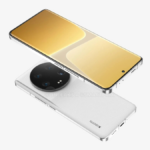Xiaomi’s latest flagship — the Mi 4 — might seem similar to its predecessor, the Mi 3, at a quick glance but look through the details and you will realize how different both handsets really are.
The Mi 4 might seem like a modest upgrade over the Mi 3, and it is, but they have the potential of greatly increasing the overall usability experience of the device.
Below is a quick tech specs comparison of the Mi 3 to the Mi 4.
| Basis of Difference | Mi 3 | Mi 4 |
| Weight | 145g | 149g |
| Display | 5-inch 1080p IPS LCD | 5-inch 1080p laminated IPS LCD from Sharp or JDI |
| Processor | Snapdragon 800 clocked at 2.26GHz | Snapdragon 801 clocked at 2.5GHz |
| GPU | Adreno 330 | Adreno 330 |
| RAM | 2GB RAM | 3GB RAM |
| Storage | 16/64GB storage space | 16/64GB storage space |
| Camera | Rear: | Rear: |
| 13MP camera | 13MP camera (Sony’s IMX214 sensor) | |
| F/2.2 aperture | F/1.8 aperture | |
| LED flash | LED flash | |
| Touch focus | Touch focus | |
| HDR | HDR | |
| 4K video recording | ||
| Face and smile detection | ||
| Front: | Front: | |
| 2.1MP | 8MP | |
| Connectivity | Wi-Fi b/g/n/ac | Dual-band Wi-Fi b/g/n/ac |
| Bluetooth 4.0 | Bluetooth 4.0 | |
| NFC | NFC | |
| Wi-Fi Direct | Wi-Fi Direct | |
| microUSB 2.0 | DC-HSPA+ | |
| MHL | LTE/CDMA variants | |
| USB On-The-Go | microUSB 2.0 | |
| GPS with A-GPS | MHL | |
| GLONASS | USB On-The-Go | |
| IR blaster | ||
| GPS with A-GPS | ||
| GLONASS | ||
| Sensors | Proximity sensor | Proximity sensor |
| Ambient light sensor | Ambient light sensor | |
| Accelerometer | Accelerometer | |
| Gyroscope | Gyroscope | |
| Compass | Compass | |
| Battery | 3080mAh non-removable | |
| Android version | Android 4.4.2 KitKat | Android 4.4.2 KitKat |
| MIUI V5 | MIUI V6 |
What do you think about the Xiaomi Mi 4? Will you be upgrading to it or stick to its predecessor — the Mi 3?



















